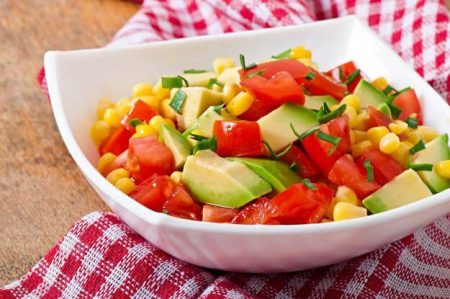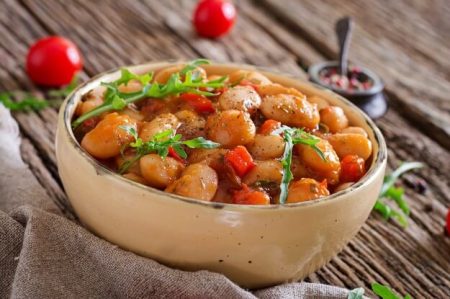This wonderful fresh vitamin salad will brighten up any festive or everyday table. At first glance, this is a typical cut of fresh vegetables and herbs.
But if you add a spicy sauce here, the salad will be enriched with new flavors. This salad will appeal to vegetarians and people who prefer light meals.
This recipe seems like a great option for a healthy and refreshing meal or side dish. Just be sure to follow any specific instructions or ingredient measurements carefully to achieve the best results.
Directions
0/0 steps made- Take the vegetables and herbs you like. In our case, it is fresh cucumber, radish, cabbage, as well as onion leaves, parsley, and dill. Cut everything as you like.
- Let’s prepare the dressing sauce for the salad. Squeeze lemon into a small bowl, add olive oil, mustard sauce. Also, squeeze garlic here. Add some salt and mix well.
- Combine vegetables, herbs, and dressing and mix well again.
The Best way to squeeze a lime or lemon (for vitamin salad recipe)
This recipe brings together a colorful mix of fresh vegetables like lettuce, cucumber, and bell pepper, along with fragrant herbs such as dill and parsley.
It’s packed with nutrients, offering a good dose of vitamins A, C, and K, plus folate, potassium, and magnesium. Nuts and seeds add healthy fats and a bit of protein, making the salad both tasty and satisfying.
While it’s hard to tie this dish to a single cuisine, the combination of dill, parsley, walnuts, and pumpkin seeds gives it an Eastern European touch. At the same time, the vinegar-based dressing is more typical of Western-style salads.
Video by Gavin Wren
Pros for This Vitamin Salad Recipe
Nutritious. The salad contains a variety of fresh vegetables and herbs that are packed with vitamins and minerals, making it a healthy choice.
Flavorful. The combination of fresh herbs, vegetables, and nuts/seeds provides a range of flavors and textures, making it a tasty and satisfying dish.
Easy to prepare. The recipe is relatively straightforward, making it accessible to home cooks of all levels.
Versatile. The salad can be served as a side dish or a main meal and can be adapted to suit different dietary preferences and restrictions.
Cons for This Vitamin Salad Recipe
Time-consuming. Preparing all the vegetables and herbs for the salad can be time-consuming, especially if you don’t have experience with food preparation.
Requires fresh ingredients. The recipe calls for fresh vegetables and herbs, which may not always be available or affordable, depending on where you live.
It may not be filling enough on its own. While the salad is nutritious and flavorful, it may not be filling enough on its own for some people and may need to be supplemented with additional protein or carbohydrates.
History of Salad with Fresh Herbs
This salad comes from the website Proborsch and reflects a modern twist. But salads themselves have deep roots. People in ancient Greece and Rome mixed greens and vegetables with oil and vinegar as early as the 4th century BCE.
Over the centuries, salads changed with the ingredients people had on hand. In the Middle Ages, they often included fruits and sweet dressings. During the Renaissance, cooks in Europe began adding savory items like meat and cheese.
Today, people around the world enjoy salads in many forms. From simple greens to colorful and creative combinations like this one, fresh ingredients and vibrant flavors keep salads popular in every season.
Additional Info About This Recipe
This recipe doesn’t seem tied to a specific culture or region, though some ingredients like walnuts and fresh herbs often appear in Eastern European cooking. Many cultures enjoy salads made with fresh vegetables and herbs, so this one fits into a wide global tradition.
The exact origin of this vitamin salad remains unknown. It likely comes from the website Proborsch and may draw inspiration from classic salads or a mix of regional influences.
Lettuce adds vitamins A and K, along with folate and iron. Cucumbers help with hydration and supply small amounts of vitamins C and K, plus minerals like potassium and magnesium.
Bell peppers bring a boost of vitamin C and also contain vitamin A and potassium. Fresh dill and parsley are low in calories but offer some vitamins and minerals like calcium and iron. Pumpkin seeds and walnuts round things out with healthy fats and protein.
The salad already works for vegetarians. To make it vegan, swap the honey in the dressing for a plant-based sweetener and use vegan-friendly vinegar. For a gluten-free version, choose certified gluten-free vinegar and double-check all packaged ingredients.





Recent comments